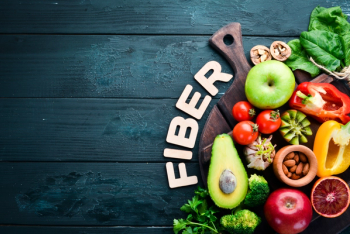
A New, Highly Concentrated Pea Protein Isolate Lets Formulators Make “Excellent Source of Protein” Claims, Debuts at Natural Products Expo West
Ingredion introduced Vitessence Pulse 1803 pea protein isolate, which the company says contains at least 80% protein, at the Natural Products Expo West trade show.
A new, highly concentrated pea protein isolate ingredient comprising a minimum 80%-protein content makes it possible for food and beverage formulators to make an “excellent source of protein” claim while still formulating with a plant-based ingredient as opposed to animal protein. Ingredion (Bridgewater, NJ) introduced Vitessence Pulse 1803 pea protein isolate, sourced from yellow pea, at March’s Natural Products Expo West show.
As Akshay Arora, business scientist, global protein development, Ingredion, explained, a protein isolate is a highly purified, dried form of a food protein comprising a high percentage of protein-typically 80% protein content or higher on a dry basis, depending on the source. Arora explained how isolates are produced with such high protein content. “High concentration of proteins in isolates is accomplished by removing non-protein components [such as] fats, starch, and fiber from the raw material.” After that, he said, the isolate undergoes spray drying.
The isolate form allows food formulators to include a high level of protein in a product-high enough to make an “excellent source of protein claim”-without having to use a very high amount of the ingredient. “By concentrating the pea protein into a pea isolate ingredient, formulators can utilize a ‘more efficient delivery’ of protein on a gram-per-gram basis for finished products,” said Julie Emsing Mann, global protein program manager, Ingredion. “They are able to use less protein ‘powder’ and yet deliver a protein claim.” The ingredient labels simply as “pea protein,” the company says.
“Protein isolates are the most concentrated form for protein delivery in food and beverage systems,” Mann added. “An 80%-protein ingredient provides the ability to reach a protein claim. For example, an ‘excellent source’ claim requires the food to contain 20% or greater of protein RDI or DRV of the reference amount customarily consumed. By utilizing an ingredient with a higher protein concentration, the formulator is able to preserve valuable space in their formulation for additional ingredients to impart excellent sensory profiles. This includes more latitude for binding, sweetening, or flavoring of the product matrix.”
Vitessence Pulse 1803, with more than 80% protein on a dry basis, is Ingredion’s highest-protein-concentrated pulse ingredient to date. The company also offers pulse concentrates, which contain a medium 55%-60% protein content on a dry basis, and pulse flours, which contain a lower 20% protein content on a dry basis.
The choice of which kind of pulse ingredient to use-an isolate, a concentrate, or a flour-depends on the application, said Mann. “A flour, concentrate, and isolate have unique benefits and value propositions in food and beverage products,” she said. “All of these products deliver a pulse-based solution, which is a sustainable, low-allergen, non-GMO solution. An isolate is not ‘better’ than a concentrate; it simply has the best fit for a specific usage and target. In products where protein claims are desired, or delivering a substantial amount of protein is desired, an isolate is a good fit. In finished products desiring nutritional balance from protein, fiber, and even micronutrients, a concentrate is the best fit.” Meanwhile, pulse flour is offered as a gluten-free, clean-label flour alternative.
Vitessence Pulse 1803 isn’t the only pea protein isolate on the market, but Mann pointed out that these ingredients, which usually range between 80%-85% protein content, can differ in terms of flavor and functionality depending on what processes a supplier used to produce the isolated protein fraction.
Vitessence Pulse 1803, for instance, is said to sidestep some of the taste challenges typically associated with pulse and pea ingredients. Arora said that Pulse 1803 is “significantly lower in a raw, beany note that is characteristic of most pulse products, which results in a ‘cleaner’ pulse product.” He said that the ingredient is “characterized by cooked bean and sweet aromatic notes, with a creamy texture.” Pulse 1803 is also offers better emulsification for higher stability and improved water- and oil-holding capacity for better shelf life compared to competing plant-based proteins, according to the company.
Pulse 1803 is suited to a wide range of products, including nutrition bars, ready-to-drink beverages, bakery items, dairy alternatives, and meat alternatives. The ingredient has a two-year shelf life, is sustainable and non-GMO, and also offers formulators a protein ingredient that is not a major source of allergens. “This provides ‘free from’ value proposition and an operational flexibility-no allergen cleanups in between runs,” Arora pointed out.
As such, the pea protein isolate can replace dairy and soy proteins, giving product formulators a new plant protein source to work with. Nutrition bars would be a popular place to start because the ingredient “provides a clean flavor and smooth mouthfeel to nutritional bars,” Mann said.
Formulators might still need to grapple with some of the challenges associated with high-protein formulating in bars. As Mann pointed out, “Challenges with protein bars, in general, include chewy or firm textures, bar hardening and flavor changes over time, and gritty mouthfeel.” She noted that, like other protein sources, “pea protein inclusion into these matrices can provide similar challenges.”
Ingredion says the company can help solve these problems. For instance, said Arora, in low-moisture products like bars, “use of appropriate carbohydrates and fats can help in preserving a softer texture” and avoid bar hardening. In liquid solutions like beverages, the company recommends using an additional “hydration step” in order to ensure proteins will disperse and solubilize, lending a smoother mouthfeel.
Newsletter
From ingredient science to consumer trends, get the intel you need to stay competitive in the nutrition space—subscribe now to Nutritional Outlook.





